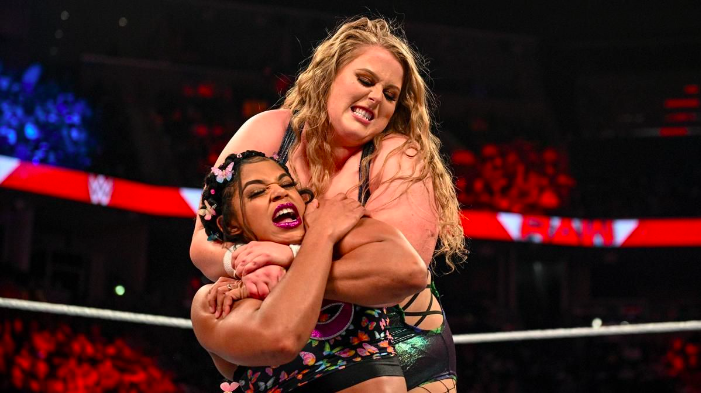Wrestling
Biographical Backgrounds Of The Superstar Wrestler The Rock (Dwayne Johnson)
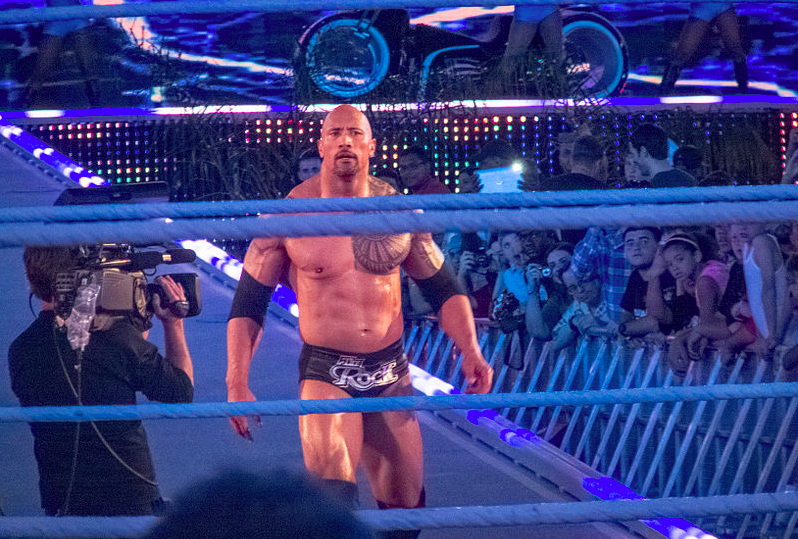
Biographical Backgrounds Of The Superstar Wrestler The Rock (Dwayne Johnson)
In the realm of professional wrestling, few names command as much respect and admiration as The Rock, also known as Dwayne Johnson. From his early days as a promising athlete to his meteoric rise as a Hollywood icon, Johnson’s journey is nothing short of extraordinary. Let’s explore the fascinating biographical backgrounds of this legendary wrestler-turned-superstar.
Early Life and Athletic Beginnings
Dwayne Douglas Johnson was born on May 2, 1972, in Hayward, California, to a family deeply rooted in the world of sports and entertainment. His father, Rocky Johnson, was a professional wrestler, while his mother, Ata Maivia, came from a family of Samoan wrestlers. From a young age, Johnson showed immense athletic talent, excelling in football and wrestling during his high school years.
College Football Career
After graduating from high school, Dwayne Johnson earned a football scholarship to the University of Miami, where he played as a defensive lineman for the Miami Hurricanes. During his time at Miami, Johnson showcased his prowess on the field and helped lead his team to victory in the national championship in 1991.
Transition to Wrestling
Despite his success in football, Dwayne Johnson’s true passion lay in professional wrestling, following in the footsteps of his father and grandfather. After being cut from the Canadian Football League, Johnson made the bold decision to pursue a career in wrestling, joining the ranks of the World Wrestling Federation (WWF), now known as WWE.
Debut as “Rocky Maivia”
In 1996, Dwayne Johnson made his wrestling debut under the ring name “Rocky Maivia,” paying homage to his father and grandfather. His early career in the WWF was marked by rapid success, as he quickly rose through the ranks and captured the Intercontinental Championship within his first year.
The Rise of “The Rock”
As his popularity soared, Dwayne Johnson underwent a transformation, adopting the persona of “The Rock” – a charismatic, trash-talking, eyebrow-raising superstar who captivated audiences with his larger-than-life presence. With his catchphrases like “Can you smell what The Rock is cooking?” and his signature move, The Rock Bottom, he became one of the most beloved and iconic figures in wrestling history.
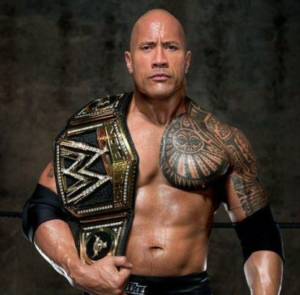
WWF/E Career Highlights
During his illustrious wrestling career, The Rock achieved numerous accolades and accomplishments, including multiple WWE Championship reigns, victories at WrestleMania, and memorable feuds with rivals like Stone Cold Steve Austin, Triple H, and John Cena. His electrifying performances and unparalleled charisma made him a fan favorite around the world.
Transition to Hollywood
In the early 2000s, Dwayne Johnson expanded his horizons beyond the wrestling ring, setting his sights on a career in Hollywood. With his natural charm, charisma, and undeniable screen presence, he quickly became one of the industry’s most sought-after actors, starring in blockbuster films like “The Scorpion King,” “Fast & Furious,” and “Jumanji: Welcome to the Jungle.”
Success in Film and Television
Dwayne Johnson’s success in Hollywood has been nothing short of phenomenal, with his films grossing billions of dollars worldwide and earning critical acclaim. His versatility as an actor has allowed him to tackle a wide range of roles, from action-packed thrillers to family-friendly comedies, earning him a dedicated fan base and solidifying his status as a bona fide movie star.
Conclusion
In conclusion, the biographical backgrounds of Dwayne “The Rock” Johnson illustrate a remarkable journey of talent, determination, and unparalleled success. From his humble beginnings as a promising athlete to his reign as a wrestling icon and Hollywood superstar, Johnson’s impact on the world of sports and entertainment is truly unparalleled. His legacy will continue to inspire generations of fans and aspiring athletes for years to come.
FAQs (Frequently Asked Questions)
What is Dwayne Johnson’s real name?
Dwayne Johnson’s real name is Dwayne Douglas Johnson. He adopted the ring name “The Rock” during his wrestling career.
How did The Rock get his start in wrestling?
The Rock followed in the footsteps of his father and grandfather, both of whom were professional wrestlers. He made his wrestling debut in the WWF in 1996 under the ring name “Rocky Maivia.”
What are some of The Rock’s most famous catchphrases?
The Rock is known for his iconic catchphrases, including “Can you smell what The Rock is cooking?” and “Just bring it!”
Has The Rock ever returned to wrestling?
Yes, The Rock has made sporadic returns to wrestling, appearing at special events like WrestleMania and engaging in memorable matches against fellow WWE superstars.
What is The Rock’s net worth?
As of [2022], Dwayne Johnson’s net worth is estimated to be in the hundreds of millions of dollars, making him one of the highest-paid actors in Hollywood.
Wrestling
Wrestler Aliyah Biography and Net Worth: A Look Inside
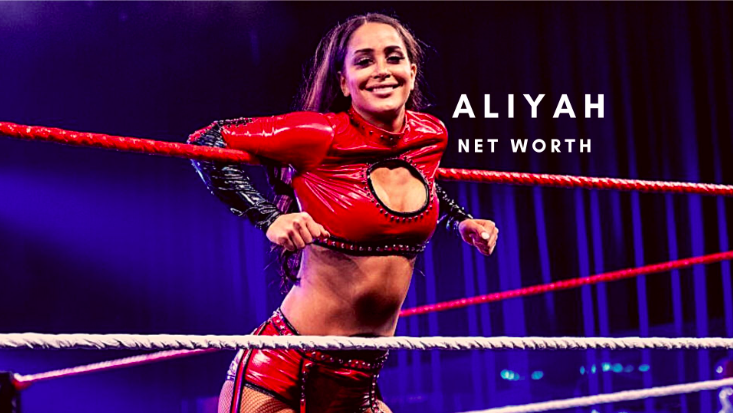
Wrestler Aliyah Biography and Net Worth: A Look Inside
Aliyah, a rising star in professional wrestling, has captivated fans with her resilience, charisma, and athletic prowess. Known for her dynamic moves in the ring and her engaging personality outside of it, she has become a prominent figure in the wrestling world. This comprehensive article delves into Aliyah’s biography, career achievements, and net worth, shedding light on her journey to the top.
Early Life and Background
Humble Beginnings
Aliyah, born Nhooph Al-Areebi, entered the world on November 23, 1994, in Toronto, Ontario, Canada. Raised in a family of Middle Eastern descent, Aliyah grew up in a multicultural household that emphasized discipline and perseverance. Her passion for wrestling developed at a young age, inspired by the legends of WWE and her innate love for competition.
Education and Early Interests
Aliyah attended St. Joseph’s College School in Toronto, where she excelled academically while actively participating in sports and drama. Her love for performing arts led her to take gymnastics and dance classes, skills that later became integral to her wrestling career. After high school, she pursued a college education in nursing but eventually shifted her focus entirely to wrestling.
The Journey to Professional Wrestling
Early Wrestling Training
Aliyah’s wrestling career began with her training at Squared Circle Training in Toronto, a reputable institution for aspiring wrestlers. Under the guidance of experienced trainers, she honed her skills in grappling, aerial maneuvers, and storytelling in the ring. Her determination and hard work paid off as she began appearing in local wrestling circuits.
Debut on the Independent Scene
Aliyah made her debut on the independent wrestling scene in 2013. Wrestling under her real name, Nhooph Al-Areebi, she quickly gained attention for her unique style that combined athleticism with charisma. Her performances caught the eye of WWE scouts, opening the door to the next chapter of her career.
Rise to Fame in WWE
Joining WWE’s Developmental Program
In 2015, Aliyah signed a developmental contract with WWE and joined its performance center in Orlando, Florida. This marked a turning point in her career as she transitioned from the independent circuit to the global stage.
NXT Journey
Aliyah debuted on WWE’s developmental brand, NXT, in 2015. Over the years, she built a reputation for her adaptability and constant improvement. Some of her notable matches during this period showcased her versatility as she faced off against high-caliber opponents like Ember Moon, Dakota Kai, and Rhea Ripley.
Main Roster Call-Up
Aliyah’s hard work culminated in her call-up to WWE’s main roster in 2021. Competing on SmackDown, she gained widespread recognition and quickly became a fan favorite. Her high-energy performances, combined with her unique fashion sense, made her stand out in the competitive world of professional wrestling.
Career Highlights and Achievements

Record-Setting Moments
One of Aliyah’s most notable achievements came in January 2022 when she set a record for the fastest victory in WWE history, defeating Natalya in just 3.17 seconds. This historic win showcased her quick thinking and agility, solidifying her place in WWE history.
Signature Moves
Aliyah is known for her array of signature moves that leave fans in awe. These include the:
- Northern Lights Suplex: A move that highlights her technical wrestling skills.
- Aliyah Bomb: A powerful finisher that demonstrates her strength and precision.
- High-Flying Maneuvers: Including crossbodies and springboard attacks that showcase her athleticism.
Fan Connection
Aliyah’s engaging personality and genuine interactions with fans have made her one of the most relatable figures in WWE. Her social media presence and fan meet-and-greet events have further strengthened her connection with the WWE Universe.
Aliyah’s Net Worth and Financial Success
Earnings from Wrestling
As of 2024, Aliyah’s net worth is estimated at $1.5 million, a figure that reflects her earnings from WWE contracts, merchandise sales, and event appearances. Her main sources of income include:
- WWE Salary: An estimated annual income of $250,000, including bonuses for pay-per-view events.
- Merchandise Sales: Royalties from her branded merchandise, including t-shirts, posters, and action figures.
- Special Appearances: Earnings from promotional events and wrestling conventions.
Endorsements and Sponsorships
Aliyah has collaborated with brands such as [brand names], further boosting her income. Her partnerships often align with her persona, featuring fitness, fashion, and lifestyle products.
Lifestyle and Investments
Despite her growing wealth, Aliyah maintains a balanced lifestyle. She invests in real estate and is known for her philanthropic contributions to causes such as animal welfare and education.
Personal Life and Interests
Hobbies and Activities
Outside the ring, Aliyah enjoys traveling, photography, and spending time with her family. Her passion for fashion is evident in her ring gear, which often features intricate designs and vibrant colors.
Commitment to Fitness
Aliyah is a fitness enthusiast who regularly shares her workout routines on social media. Her dedication to staying in top physical condition is a key factor in her success as a wrestler.
Challenges and Triumphs
Overcoming Obstacles
Aliyah’s journey has not been without challenges. From injuries to navigating the pressures of a highly competitive industry, she has faced each obstacle with resilience and determination.
Growth and Evolution
Every setback has been an opportunity for Aliyah to evolve. Her ability to adapt and grow has made her a role model for aspiring wrestlers around the world.
Future Aspirations
Championship Goals
Aliyah’s primary goal is to secure a championship title in WWE. With her current trajectory, this milestone seems well within reach.
Expanding Her Brand
Aliyah also aims to expand her brand beyond wrestling, exploring opportunities in acting, modeling, and entrepreneurship.
Conclusion
Aliyah’s journey from a young wrestling enthusiast in Toronto to a global WWE superstar is an inspiring tale of dedication and passion. Her achievements, both in and out of the ring, demonstrate her commitment to excellence. With her star continuing to rise, the future holds limitless possibilities for this talented athlete and entertainer.
Frequently asked Questions (FAQs)
What is Aliyah’s real name?
Aliyah’s real name is Nhooph Al-Areebi. She adopted the ring name Aliyah upon joining WWE.
How did Aliyah break into professional wrestling?
Aliyah started her wrestling career on the independent circuit before signing with WWE’s developmental program in 2015.
What is Aliyah’s signature move?
One of Aliyah’s signature moves is the Northern Lights Suplex, which showcases her technical skills and strength.
Has Aliyah won any championships in WWE?
As of now, Aliyah has not won a championship title in WWE but continues to work toward achieving this milestone.
What is Aliyah’s estimated net worth?
Aliyah’s net worth is estimated at $1.5 million, derived from her WWE earnings, merchandise sales, and endorsements.
Wrestling
Doudrop Biography and Net Worth: From Scottish Strongwoman to WWE Superstar
Wrestling
Tamina Biography and Net Worth: The Samoan Submission Machine
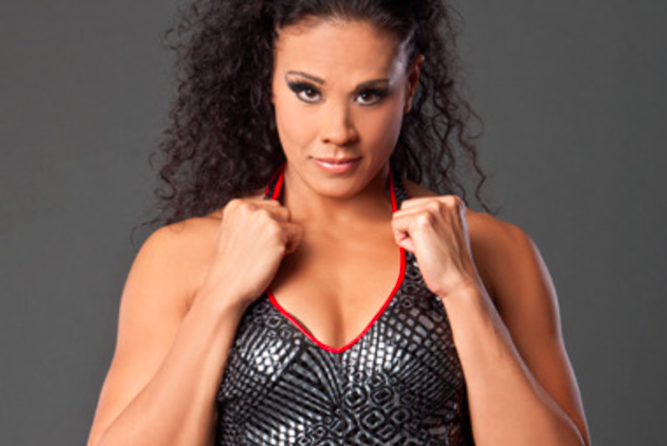
Tamina Biography and Net Worth: The Samoan Submission Machine
Tamina Snuka, known for her powerful presence and intense in-ring style, has established herself as a force in WWE. Daughter of legendary wrestler Jimmy “Superfly” Snuka, Tamina has built her legacy with strength, resilience, and dedication to the sport. This article will cover the journey of this WWE powerhouse, delving into her background, career highlights, personal life, and net worth. Fans of wrestling and those interested in Tamina’s inspiring journey will discover much to admire about her story and accomplishments.
Early Life and Family Background
Roots in a Wrestling Legacy
Tamina was born Sarona Moana-Marie Reiher Snuka-Polamalu on January 10, 1978, in Vancouver, Washington, USA. As the daughter of Jimmy Snuka, a WWE Hall of Famer known for his high-flying moves, Tamina was introduced to wrestling from a young age. Growing up in a family closely connected to wrestling legends meant that Tamina’s path to the ring was practically paved from the start.
The Influence of Jimmy “Superfly” Snuka
Her father, Jimmy Snuka, is considered one of the pioneers of aerial wrestling moves in the WWE. Watching her father’s career unfold, Tamina was inspired to carry on his legacy. However, her journey to WWE stardom wasn’t immediate; she initially focused on building her own identity and pursued other interests.
Beginnings of a Wrestling Career

Training and Early Ambitions
Unlike many wrestlers who start their careers in their early twenties, Tamina took time before embarking on her wrestling journey. She trained with the Wild Samoan Training Center, an institution known for producing high-profile wrestlers. Her wrestling style developed to emphasize her natural strength and physical power, which quickly set her apart.
Joining WWE: The Initial Steps
Tamina signed with WWE in 2009 and made her official debut in 2010, accompanying The Usos, who are her cousins and fellow WWE superstars. Her role as their manager quickly established her as a fierce presence on-screen, and it wasn’t long before she began competing in matches herself.
Rise to Fame in WWE
Making Her Mark in Divas Division
In her early WWE years, Tamina competed in the Divas Division—a time when women’s wrestling was still evolving. She quickly gained attention for her strong, aggressive style, which set her apart from the traditional diva image that was prominent at the time. Her matches against stars like Beth Phoenix and Natalya showcased her skills and cemented her reputation as a tough competitor.
Transition to the Women’s Evolution Era
As WWE began to emphasize women’s wrestling through its Women’s Evolution movement, Tamina’s role became even more significant. With a focus on skill, strength, and character development, Tamina stood out as a veteran presence. Her unique combination of power and aggression earned her respect and a loyal fan following.
Career Highlights and Key Matches
Memorable Rivalries
One of Tamina’s most famous rivalries was with Natalya. The two powerhouses brought intense energy to their bouts, each encounter adding layers to their storyline. Their rivalry showcased Tamina’s ability to compete at a high level and adapt to various match formats.
Teaming Up with Nia Jax
In 2018, Tamina formed a tag team with Nia Jax, another dominant force in WWE. Their partnership allowed both women to showcase their strength, and together, they became a formidable duo in the Women’s Tag Team Division. This partnership reached new heights as they competed for the WWE Women’s Tag Team Championship.
Achievements and Championships
Notable Titles and Accomplishments
Although Tamina has yet to win a major singles championship, she has been recognized for her contributions to WWE’s Women’s Division. Her perseverance and commitment to the sport have solidified her status as a respected veteran.
Winning the WWE 24/7 Championship
Tamina achieved a career milestone by winning the WWE 24/7 Championship. This title, known for its unique rules allowing it to be defended anytime and anywhere, showcased Tamina’s versatility and ability to adapt to WWE’s more comedic and unconventional storylines.
Tamina’s Wrestling Style and Persona
In-Ring Style
Tamina’s wrestling style is characterized by her incredible strength and dominance. Unlike high-flying wrestlers, she relies on brute force, often using moves that showcase her power. Moves such as the Superkick and the Samoan Drop have become her trademarks, symbolizing her no-nonsense approach in the ring.
Character Development and Evolution
While Tamina started her WWE career as a heel, she has shown versatility by adapting her character over the years. Whether competing as a villainous figure or a fan-favorite, Tamina’s persona has always centered on her strength, which remains a key aspect of her appeal to fans.
Personal Life and Family Ties
Family and Relationships
Tamina’s life outside of wrestling is heavily influenced by her family ties. As a member of the Anoa’i wrestling family, she is part of one of wrestling’s most celebrated lineages. This family includes stars like Roman Reigns and The Usos, reinforcing her legacy in WWE.
Motherhood and Balancing Life in WWE
As a mother, Tamina has balanced her wrestling career with raising her children, proving her resilience both in and out of the ring. Her dedication to her family and career has earned her admiration, and she often speaks about the importance of family in interviews.
Tamina’s Net Worth and Financial Success
Earnings from WWE
Tamina’s main source of income comes from her WWE contract. Although exact figures are not publicly disclosed, it is estimated that her annual earnings range between $200,000 and $300,000. Given her long-standing career, she has likely accumulated significant wealth through WWE salaries, bonuses, and merchandise.
Endorsements and Sponsorships
In addition to her WWE earnings, Tamina has benefited from endorsements. Her brand collaborations and social media presence contribute to her overall net worth, which is estimated at $1 million. Her endorsement deals often align with her strong, athletic image, enhancing her brand appeal.
Legacy and Impact on Women’s Wrestling
A Pioneer in WWE’s Women’s Evolution
Tamina’s career spans more than a decade, during which she has witnessed significant changes in WWE’s Women’s Division. Her presence and dedication have contributed to the Women’s Evolution, inspiring many young women to pursue wrestling careers.
Inspiring Future Generations
Tamina’s journey has resonated with fans and aspiring wrestlers alike. Her story demonstrates that resilience and hard work can lead to success, making her a role model in the wrestling community.
Conclusion
Tamina Snuka’s career in WWE is a remarkable story of perseverance, strength, and dedication. As the daughter of a wrestling legend, she has carved her own path, showcasing her powerful in-ring style and unbreakable spirit. Through various stages of WWE’s evolution, from the Divas era to the Women’s Evolution, Tamina has remained a constant presence, proving herself as a respected and formidable competitor.
Her legacy is not just about championships or accolades but about inspiring future generations of female wrestlers. With a strong family heritage and her own hard-earned success, Tamina’s influence on WWE and women’s wrestling will undoubtedly endure, serving as an inspiration for fans and aspiring athletes around the world.
Frequently Asked Questions (FAQs)
What is Tamina’s real name?
Tamina’s real name is Sarona Moana-Marie Reiher Snuka-Polamalu. She adopted the ring name “Tamina” when she joined WWE.
Who is Tamina’s father?
Tamina’s father is Jimmy “Superfly” Snuka, a WWE Hall of Famer known for his aerial moves and influence on wrestling.
Has Tamina won any championships in WWE?
Yes, Tamina has held the WWE 24/7 Championship and has competed for other titles, such as the WWE Women’s Tag Team Championship.
What is Tamina’s estimated net worth?
Tamina’s net worth is estimated to be around $1 million, accumulated from her WWE career and endorsement deals.
Is Tamina related to other WWE stars?
Yes, Tamina is part of the Anoa’i wrestling family, which includes WWE stars like Roman Reigns and The Usos.
Tamina Snuka’s journey is a testament to strength, dedication, and resilience. With a career that continues to evolve, she remains a vital part of WWE’s Women’s Division. Her legacy and influence on women’s wrestling will inspire fans and wrestlers for years to come, as she continues to make her mark in WWE history.
-

 NBA4 months ago
NBA4 months agoLaMelo Ball Net Worth: A Comprehensive Look at the NBA Star’s Financial Empire
-

 Football6 months ago
Football6 months agoMeet the World Football Celebrities and Their Stories
-

 Football5 months ago
Football5 months agoEuro 2024: Alvaro Morata Speaks Out About ‘No Respect’ in Spain
-

 Game5 months ago
Game5 months agoThe Ultimate Guide to General Multi-Sport Events
-

 Football5 months ago
Football5 months agoRonaldo’s Business Ventures and Investments (CR7 Brand)
-

 Football5 months ago
Football5 months agoEuro 2024 Power Rankings: Spain Remains Dominant Ahead of Semifinals
-
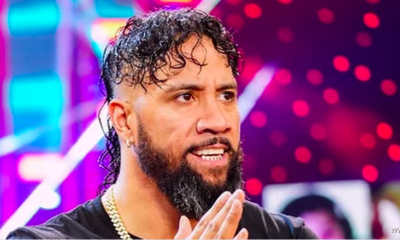
 Wrestling2 months ago
Wrestling2 months agoJey Uso Biography and Net Worth: The Rise of a WWE Superstar
-
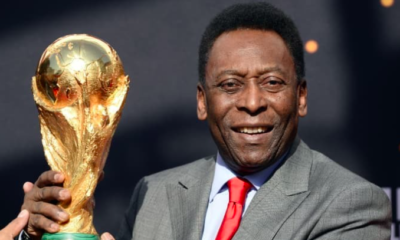
 Sports6 months ago
Sports6 months agoPele: The Legendary Journey of Football’s Greatest Icon | The Immortal King of Football

